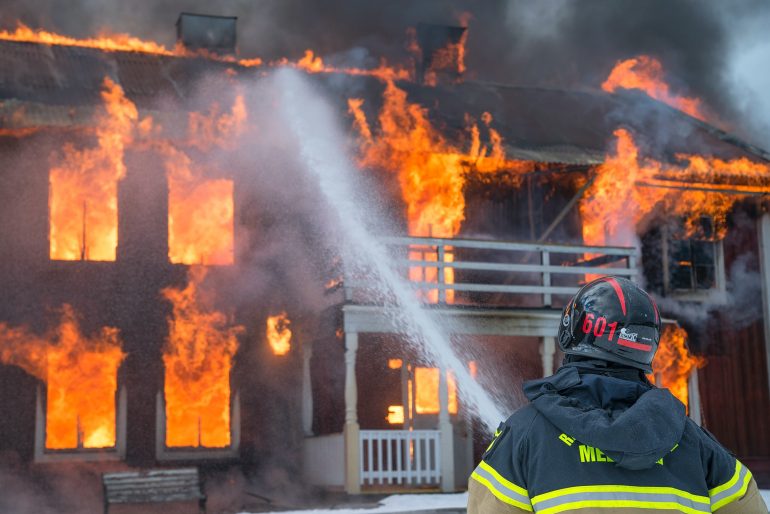Fire damage can be so much more than burned wood and scorched facilities, and it’s vital that facility owners, operators, and maintenance staff understand the scope of the work that restoration workers do when it comes to fire and smoke damage.
Of course, the flames themselves are a huge threat in the event of a blaze. But just as potentially damaging to buildings, their structure and fittings, and their occupants are the immediate and residual smoke damage, the effects of the heat, and the corrosive substances that are produced by a fire.
David Oakes, an RIA Certified Restorer, IICRC-approved restoration instructor, and chairman of the ANSI/S540 2021 Consensus Body, highlights the dangers of fire and smoke damage, including heat and pressure damage, and what can be done to mitigate it.
RELATED: Recognizing the relevance of restoration’s role
Oakes notes that the residues and gases produced by fire can include particle matter (PM), polycyclic aromatic hydrocarbons (PAHs), carbon dioxide, carbon monoxide, heavy metals, dioxins, and other complex chemical compounds, according to the U.S. Environmental Protection Agency (EPA) and Centers for Disease Control (CDC). As particles settle and vapours condense, those products form a film that is generally acidic and often contains numerous carcinogens. These residues can also produce offensive odours and damage surfaces and finishes.
The good news is that the high levels of toxicity in these residues dissipate significantly when the fire stops burning. However, depending on the severity of the damage, ventilation and/or HEPA air scrubbers and personal protective equipment may well be needed.
Temperatures in a structure fire can reach around 1,000 degrees Celsius, far higher than the level of heat that can cause serious damage. The heat line, a visible demarcation between heavy and light smoke residue, can be used as a reference to determine whether structural components and contents are fully restorable.
In addition to the sheer physical damage caused by such heat, these temperatures exacerbate the effects of the fire’s toxic residues, which are then locked into surfaces and materials by the cooling process. This type of damage requires not just cleaning but also sealing, refinishing, or replacement. It’s worth noting, says Oakes, that this kind of heat damage often does not manifest itself until an item is moved or cleaned.
In summary, all fire damage has a pressure component that spreads the coverage of toxic residues. Thermal dynamics will cause these to be attracted to cool surfaces either by pressure or condensation. For example, spaces behind cabinets and appliance mounting cavities, cool closets, and interiors can be heavily impacted even if not directly subjected to the fire. If there is significant pressure and a pathway such as an opening or physical damage, these residues can also be deposited in the interstitial areas behind the drywall. If, for example, a ceiling is breached in a fire and smoke reaches the attic, the pressures created in the attic can force smoke down into the wall cavities. These smoke tracks leave telltale signs that the drywall will need to be removed and residue needs addressing.










Thanks for the reminder that the toxicity levels should also be considered when planning to get smoke damage restoration services. I’d like to find a good service like that because I plan to get my kitchen renovated soon. I think that there will be a lot of repairs to focus on first before any refurnishing can be done.